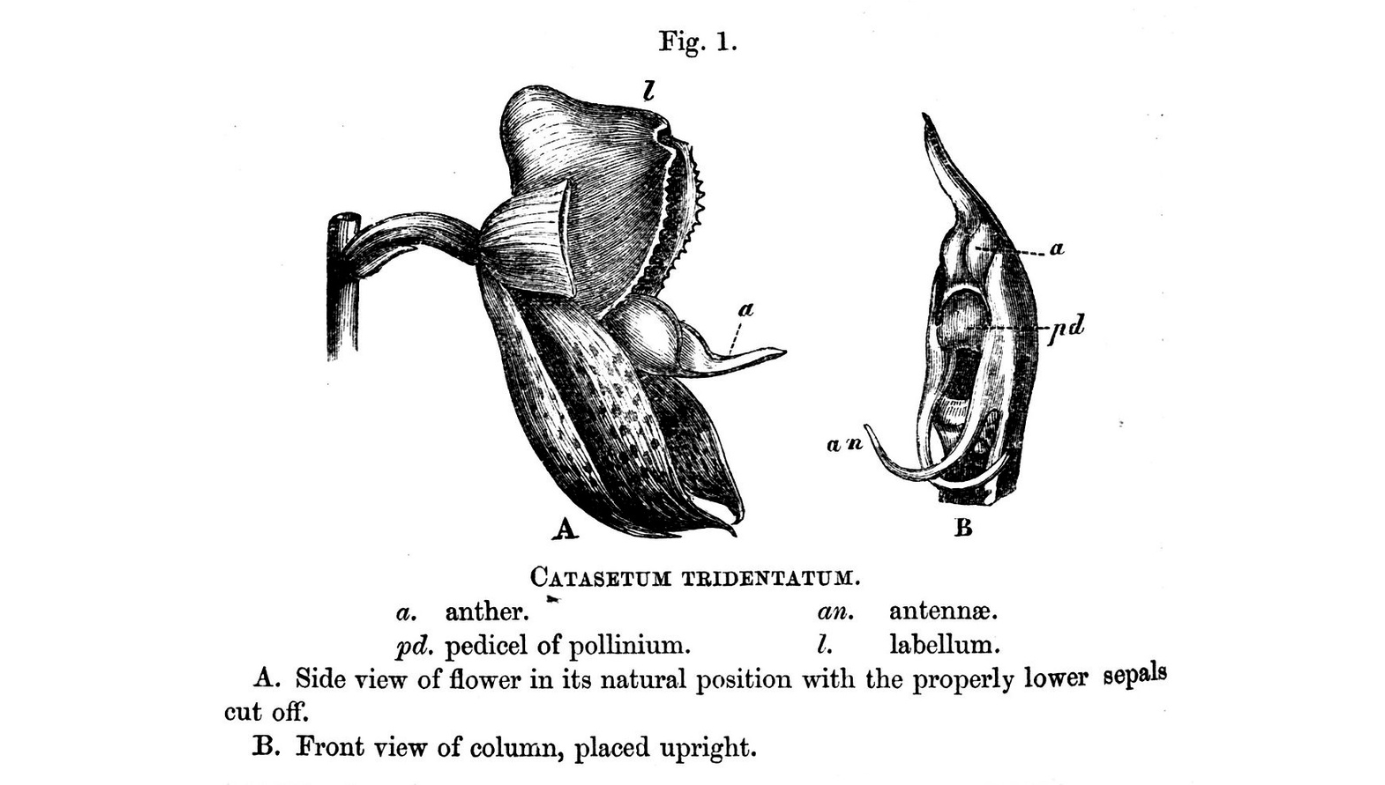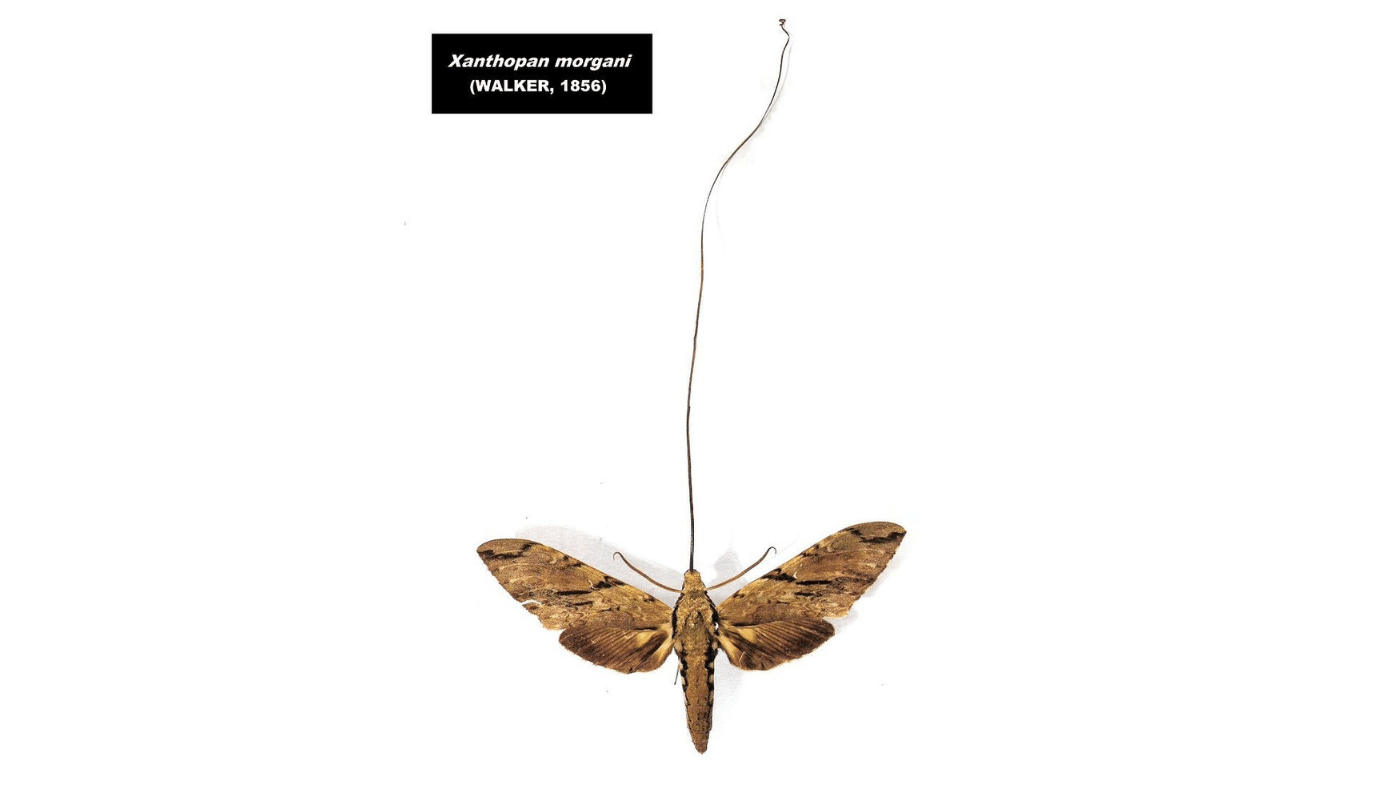
People are struggling to make sense of what seems like a rash of senseless mass public killings of innocent strangers, for reasons seemingly unconnected to politics or religion. Can biology offer any insights? We are far from a complete understanding, but we need to face our natures squarely, and honestly, if we are to make headway. But what does this mean in practice?
Sitting at his desk in his home in Kent, Darwin considered a recently acquired Madagascan orchid. It had some unusual properties. White, with an unusually long (12 inch) spur with nectar at the bottom, this flower allowed Darwin to predict the existence of another creature as yet undiscovered.

Some people (who should know better) refer to scientific accounts of behavior that invoke evolution by natural selection as “just so stories.” For a variety of reasons I have come to believe that a large number of these, maybe the majority, are bad faith responses to an internal sense of revulsion that some people have on being forced to consider that they are animals, and that the rules of biology therefore apply to them. However, I was trained to “play the ball and not the man,” as it were, so I am going to ask them to think harder about Darwin, and his orchid. They should think harder about a lot of things—such as what comparably explanatory alternative they are offering (“creationist psychology,” anyone?)
But, back to the orchid. What did its existence imply? White is the only colour that a nocturnal creature has a chance of interacting with, and the unusual arrangement of the nectar—an attractive food source, implies a creature with a hugely long tongue, and the ability to hover, so as to be able to collect it.
Twenty years after Darwin had deduced its existence, Darwin’s Hawkmoth (xanthopan morganii praedicta) was eventually found.

Such a beautiful display of the predictive power of understanding how evolution by natural selection works in practice is tougher to find in humans—but we tried to emulate my intellectual hero with regards to something rather less beautiful, but no less subject to the laws of biology. Are killers sometimes attractive?
A few years ago, we analysed the horrible phenomenon of spree killings—the mass murder of at least five people (typically strangers) in public spaces, almost exclusively by male protagonists. I published on our findings here in Quillette last month (many thanks for your feedback by the way). Our data (which are a bit old now) showed that spree killers could be meaningfully divided into (at least) two classes of perpetrator (we do not see this as exhaustive).

The younger ones (average age 21) were typically school refusers, with histories of mental illness, and lacking in both current relationships, and the chances of future ones. We’ve subsequently found that these younger ones often leave manifestos where they bemoan their lack of success in the world, especially with women. They might get killed in the course of their spree, but were less likely to die in the process than the older type. The writings that they leave behind reflect an envious bitterness at the world. As Shakespeare’s famously deformed villain Richard III described himself,
And therefore, — since I cannot prove a lover,
To entertain these fair well-spoken days, —
I am determined to prove a villain,
And hate the idle pleasures of these days.
Envy hates what it cannot have. Jealousy aggressively—sometimes beyond the point of reason—seeks to protect what it fears losing. The older spree killers typically had jobs and relationships, but were in the process of losing either or both, and did not typically have a history of mental health issues, beyond those typical of the general population.
As Shakespeare’s Macbeth describes his self-harming, murderous spree:
I am in blood
Stepped in so far that should I wade no more,
Returning were as tedious as go o'er
Shakespeare understood both envy and jealousy, and was not afraid to face, and examine, their implications as part of our nature. He also clearly saw that to understand is not to forgive. As Jerry Fodor famously put it, “Sometimes it just sharpens one’s contempt.” We might profit from the hard-headedness of his time.
Interestingly, the average ages of our envious type (21 years) and jealous type (43 years) are (roughly) the ages at which men are beginning to acquire status (or the dawning realisation that they might never do this) or to start a downward spiral of losing it. Status is, of course, key to male reproductive value. “Status” is not just one thing of course—what makes someone high status to one, might be anathema to others. But here’s the thing. There exist women for whom murdering others raises your status in their eyes, and they are not shy about admitting it. This is a quote from an online fan site for killers:
I would bang Wayne Gacy. Why? Because he has an impressive body count. Would I find him attractive if he was just a petty thief? Hell no. Edmund Kemper is not commercially attractive in any way, but I’d still fuck him ten ways til Sunday.
The existence of the younger, envious, type of spree killer, with their self-conscious notoriety seeking, sometimes expressed in manifestos, and surprisingly high level of self-awareness about their likely continued lack of success with women, implied that their actions might have an audience. And, they are there to be found, as the above quote illustrates.
Hybristophilia is the technical term for those (almost exclusively women) who fetishize criminality. But spree killing (and serial killing) is not mere criminality. It is among the most taboo of behaviors imaginable. It is worth bearing all this in mind, because some of the commentators on spree killings persist in implying that it is a phenomenon of little import, given the relatively low risk of dying.
This viewpoint, although callous towards the victims and their families, neglects important facts. It fails to consider the impact on mental health when an entire generation grows up perceiving school as a place of fear and threat, where even toddlers may be expected to wear bulletproof backpacks. Moreover, it overlooks the interconnected nature of spree killings, which are not solely linked to easily identifiable patterns of mental illness. Spree killers do not emerge out of nowhere; our species has exhibited such behaviors throughout recorded history, and the prevalence of guns has made them even more deadly.
Some of these facts have not gone unnoticed by behavioral scientists. Ogas and Gaddam, in their superb analysis of Internet pornography, make the following point: “It turns out that killing people is an effective way to elicit the attention of many women: virtually every serial killer, including Ted Bundy, Charles Manson, and David Berkowitz, has received love letters from large numbers of female fans.”
Are these hybristophiles just foolish young girls who have confused the concepts of taboo-busting “bad boys” and “celebrities” in a pathological fashion? The answer is more complex than it first appears. In our recent paper in Journal of Police and Criminal Psychology, we analysed their online fan sites in terms of themes in their fantasies, self-created art, and other artefacts. Once again, as with the spree killers, there were two distinct types. The first, and by far the most common, showed little distinction—in terms of their fantasy lives, at any rate—from a typical One-Direction fan. Their art was wish-fulfilling, with themes of redemption. “No one understands him like I do.”
There was, however, another—much darker—type of hybristophile. They focused much more on the killings themselves, showing sadistic glee at the victims’ pain and fear. And they expressed no reformation desires for the objects of their fetish—on the contrary, they expressed a desire to join in.
And they, like some of the spree killers themselves, were remarkably self-aware. People struggle to make sense of this because they want, so desperately, for these sorts of abhorrent behaviors to be some obvious result of an easily censored media input, or an easily labelled pathology. Answers are not going to be so easy, alas. And they will not let human nature off the hook.






